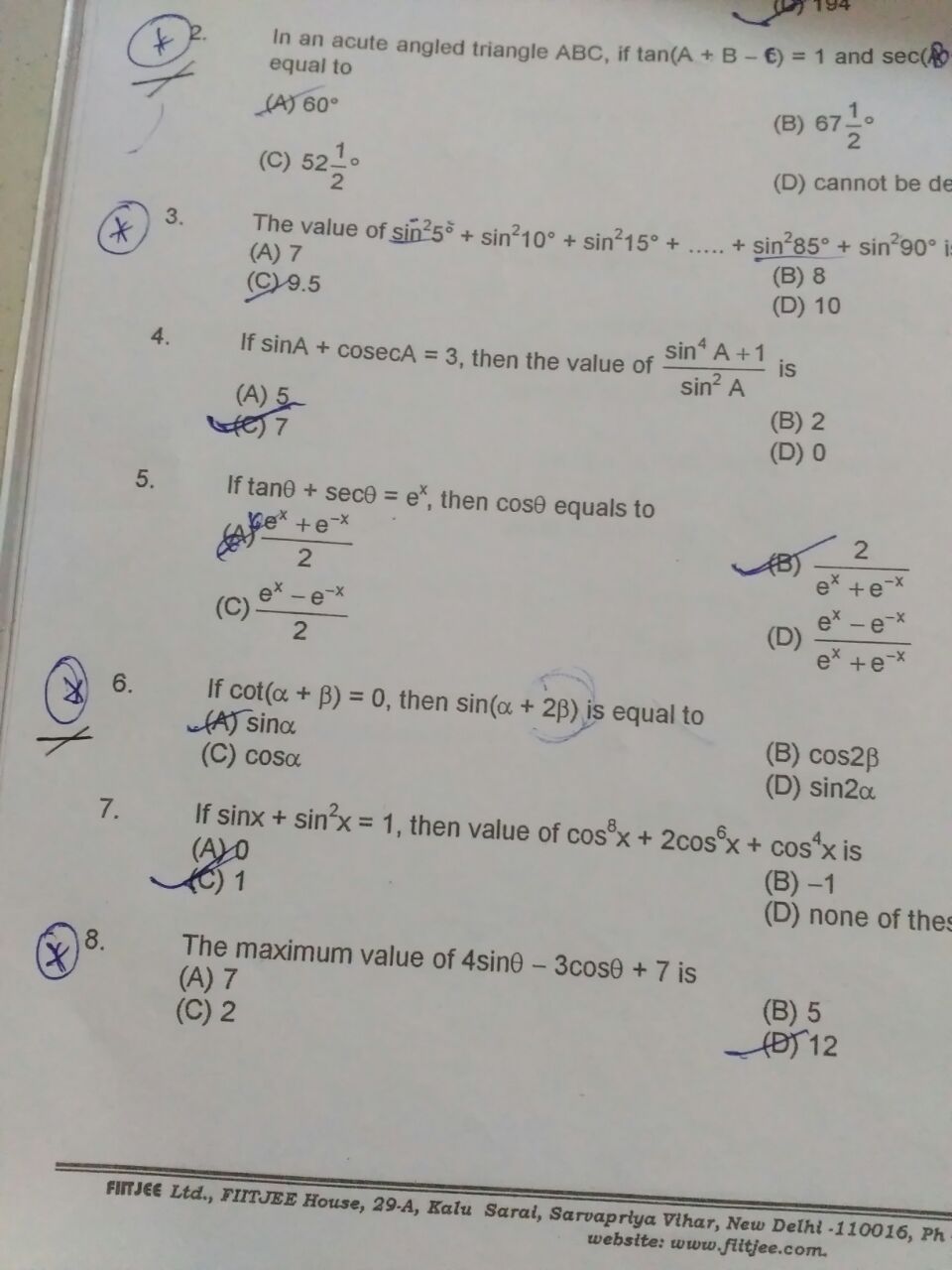Please solve q 8 ?

2 Answers
Explanation:
any expression of the form
can be written in the form
where
we have
so take the first two terms of
expand and compare coefficients
for teh purpose aof max/min problems
The correct answer is
Explanation:
Let
Differentiating wrt
The critical points are when
Therefore,
Verification (by calculating the decond derivative) :
As


